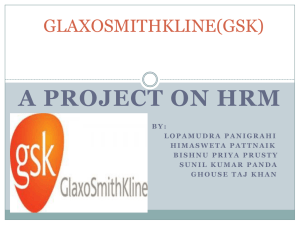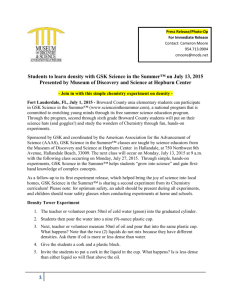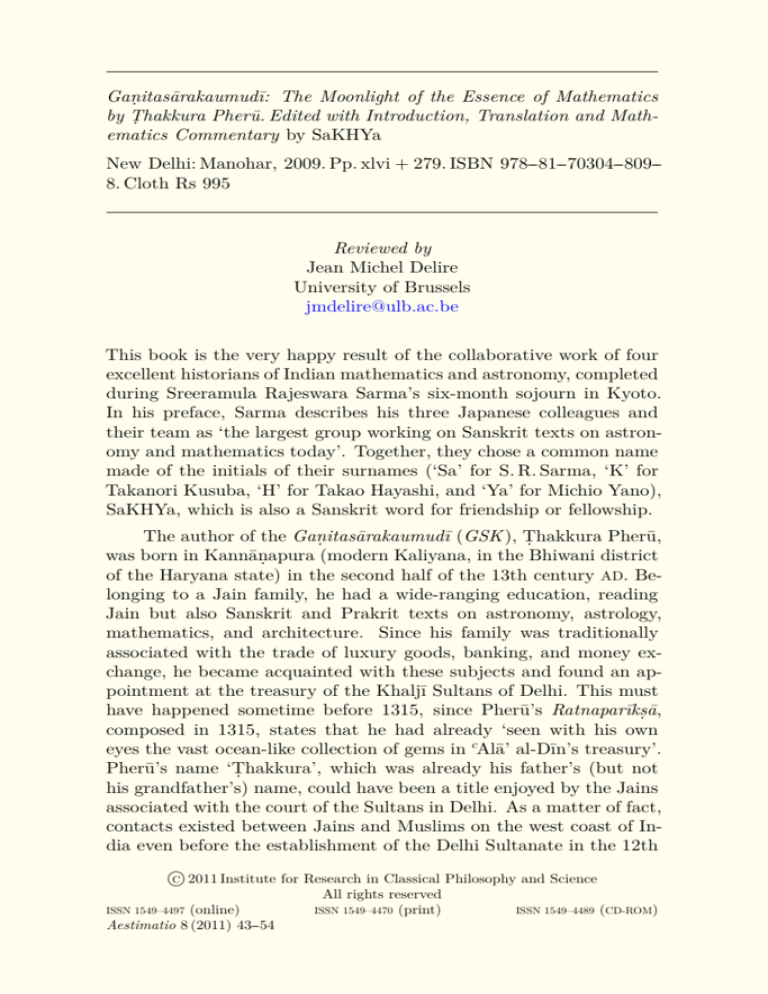
Gan.itasārakaumudı̄: The Moonlight of the Essence of Mathematics
by T
. hakkura Pherū. Edited with Introduction, Translation and Mathematics Commentary by SaKHYa
New Delhi: Manohar, 2009. Pp. xlvi + 279. ISBN 978--81--70304--809-8. Cloth Rs 995
Reviewed by
Jean Michel Delire
University of Brussels
jmdelire@ulb.ac.be
This book is the very happy result of the collaborative work of four
excellent historians of Indian mathematics and astronomy, completed
during Sreeramula Rajeswara Sarma’s six-month sojourn in Kyoto.
In his preface, Sarma describes his three Japanese colleagues and
their team as ‘the largest group working on Sanskrit texts on astronomy and mathematics today’. Together, they chose a common name
made of the initials of their surnames (‘Sa’ for S. R. Sarma, ‘K’ for
Takanori Kusuba, ‘H’ for Takao Hayashi, and ‘Ya’ for Michio Yano),
SaKHYa, which is also a Sanskrit word for friendship or fellowship.
The author of the Gan.itasārakaumudı̄ (GSK ), T
. hakkura Pherū,
was born in Kannān.apura (modern Kaliyana, in the Bhiwani district
of the Haryana state) in the second half of the 13th century AD. Belonging to a Jain family, he had a wide-ranging education, reading
Jain but also Sanskrit and Prakrit texts on astronomy, astrology,
mathematics, and architecture. Since his family was traditionally
associated with the trade of luxury goods, banking, and money exchange, he became acquainted with these subjects and found an appointment at the treasury of the Khaljı̄ Sultans of Delhi. This must
have happened sometime before 1315, since Pherū’s Ratnaparı̄ks.ā,
composed in 1315, states that he had already ‘seen with his own
eyes the vast ocean-like collection of gems in cAlā’ al-Dı̄n’s treasury’.
Pherū’s name ‘T.hakkura’, which was already his father’s (but not
his grandfather’s) name, could have been a title enjoyed by the Jains
associated with the court of the Sultans in Delhi. As a matter of fact,
contacts existed between Jains and Muslims on the west coast of India even before the establishment of the Delhi Sultanate in the 12th
C 2011 Institute for Research in Classical Philosophy and Science
(online)
Aestimatio 8 (2011) 43--54
ISSN 1549–4497
All rights reserved
(print)
ISSN 1549–4470
ISSN 1549–4489 (CD-ROM)
44
Aestimatio
century; and the Sultans sought for conducting banking and minting
activities the cooperation of the Jains who controlled minting in the
Gujarat-Rajasthan-Delhi region. Pherū was one of those Jains who
served as mediators between the Islamic and Sanskritic traditions
of learning. This is the principal reason why he was such a versatile author, writing on astronomy (Jyotis.asāra, 1315), architecture
(Vāstusāra, 1315), coins (Dravyaparı̄ks.ā, 1 1318) when he occupied a
high position in the mint of Qut.b al-Dı̄n Mubārak Shāh (1316--1320),
minerals (Dhātūtpatti 2), and mathematics (Gan.itasārakaumudı̄ or
Gan.itasāra). This last work is not dated; but SaKHYa observe that
the division proposed by Pherū of the silver .taṁka into 50 drammas 3
was no longer in use after cAlā’ al-Dı̄n Muh.ammad (1296--1316) issued a silver .taṁka of 60 drammas (according to the Dravyaparı̄ks.ā),
a rate that was continued until Qut.b al-Dı̄n Mubārak. Therefore,
the Gan.itasārakaumudı̄ could not have been composed after 1316.
In all his works, Pherū’s aim was to provide professionals such
as bankers, traders, accountants, and masons, with a practical and
useful manual. This explains why his works were not composed in
Sanskrit (titles excepted) but in a Middle Indic Apabhraṁs.a with
many vernacular terms and phonetic variations of Persians terms—
e.g., ‘goṁmat.a’ from Persian ‘gumbad’ (‘dome’), ‘munāraya’ from
Persian ‘mı̄nār’ (‘minaret’).
The first three chapters of the Gan.itasārakaumudı̄ are well structured like the mathematical texts which he consulted, principally
Śrı̄dhāra’s Pāt.ı̄gan.ita (eighth century AD) or Triśatikā and Mahāvı̄ra’s Gan.itasāsaṅgraha (GSS: ca 850 AD). These texts are good examples of what the Indian mathematicians called arithmetic (pāt.ı̄gan.ita),
usually also involving mensuration. In his Brāhmasphut.asiddānta
(628 AD), Brahmagupta rather spoke of ‘dust work’ (dhūlikarma), alluding to the writing and operations with figures drawn in the sand
spread on a plank or soil. Crude as it may appear, this method of
calculating could involve algebra in the sense that problems which
we describe today with the help of equations (and thus consider as
belonging to algebra) were solved by algorithms manipulating figures
1
Examination of the Metal Content in the Coins.
Origin of Minerals.
3 Cf. GSK 1.4a: ‘dammas’ in the text.
2
45
JEAN MICHEL DELIRE
arranged into columns drawn in the sand (see the so-called ‘Diophantine’ equations below).
These first three chapters describe 25 basic operations, eight
classes of reductions of fractions, and eight types of procedures. Pherū
does not take into consideration the simplest and elementary but
often begins from a higher level of difficulty. For instance, in GSK
1.16a, he does not recall the addition but, as the Pāt.ı̄gan.ita and
Gan.itasāsaṅgraha do, deals directly with the addition of successive
integers up to n (the ‘desired’ (icchā) number) and the resultant sum
(saṁkalita):
Add unity to the requisite (icchā) and halve it. Multiply it
by the requisite. This is the summation of the natural series
(saṁkaliya).
Bizarrely, this formula
1 + 2 + ... + n =
n + 1
2
×n
is extended to
nx + x
× n,
2x
where x is called pan.h-akkhara (translated by SaKHYa as ‘<the number of> the letters in question’). The Patan Manuscript (PM), an
anonymous and undated manuscript providing in Sanskrit the solution of several problems stated in the Gan.itasārakaumudı̄, refers to
x as śabda (word) [PM B8], as if, in order to calculate a number of
words, one adds up not the words but theirs letters, i.e., signs.
But what leads one to consider the Gan.itasārakaumudı̄ as an
original and even a difficult work is contained in its last two chapters. According to SaKHYa, the fourth and fifth chapters of the
Gan.itasārakaumudı̄ are made of what Pherū learned from his own
experience and from that of his contemporaries. They involve mechanical shortcuts in commercial arithmetic, mathematical riddles
(examples of both below), as well as rules for converting calendars
and constructing magic squares. Classical Indian solid geometry is
also applied to such new shapes as square or circular towers with
spiral stairways, minarets with fluted columns, piles of angular and
circular pilasters (e.g., the famous Qutub Minar), and especially to
46
Aestimatio
domes (see discussion below) and arches, which were employed successfully for the first time in 1311 by cAlā’ al-Dı̄n Muh.ammad. The
practical aim here was to calculate the number of bricks needed to
build walls having these shapes. According to SaKHYa [xix], Pherū,
in his section entitled ‘Computation of Bricks’, proposed such calculations for nine types of walls as opposed to one type only in other
works. Even productions of grains, sugar canes, melted butter, camel
prices according to their age, salaries of sawyers according to the
breadth and length of the wood pieces, and so on, are taken into
consideration.
It is not exactly true that
the fourth chapter of the Gan.itasārakaumudı̄, entitled ‘Four
(Special) Topics’, may be characterized as a supplement to
the traditional pāt.ı̄ mathematics treated in the first three
chapters [xxix]
for the following reasons. Pherū does not include in his first three
chapters such traditional pāt.ı̄ mathematics as the procedures for solving ‘Diophantine’ equations by the kut..taka. 4 This omission could most
probably be explained by the fact that Pherū was not an expert in
mathematics or in astronomy, while these problems occurred especially in the context of mathematical astronomy. Nevertheless, problems of this kind were often also proposed in disguise as recreational
problems. This form of presentation is certainly due to their easiness
of exposition, since their solution usually involves great difficulties.
Fermat’s last theorem—there are no integer solutions x, y, z to the
equation xn + y n = z n , when n > 2—to which many great mathematicians devoted more than three centuries of hard work, 5 deals
with the most famous of these ‘Diophantine’ equations. Pherū makes
no exception when he proposes [GSK 4.46] to compute the number of
flowers obtained after doubling and adding three, respectively, a certain (not specified) number of times, or seeks [GSK 4.47] to find the
number of flowers that a devotee had before he entered each of the
four doors of a temple, giving a flower to the doorkeeper (jakkha =
Sanskrit yaks.a) each time that he crosses his door and the half of his
bouquet to the image of the god each time that he enters the temple,
4
See, by instance, Mahāvı̄ra, GSS 115 1/2 for the explanation of such procedures, and 116 1/2 ff. for many ‘Diophantine’ problems.
5 The theorem was enunciated in 1647 but proved only in 1995.
47
JEAN MICHEL DELIRE
knowing that, at the end, he will have 20 flowers. These problems are
easy and no definite procedure is given by Pherū or by the PM; 6 but
GSK, 4.51, which follows a similar pattern, is a trifle more difficult
and necessitates a procedure that is described in 4.50: to find the
number (x0 ) of varisolas (a kind of sweetmeat) that a mother-in-law
has put on a plate, knowing that she has given the same quantity of
them (y) to each of her five sons-in-law, but also that, after each son
has taken his share from the plate, she has multiplied the remaining
varisolas by the rank of the next son (2x1 presented to the second,
3x2 to the third, and so on), until the last son takes his share (y)
and empties the plate.
This problem yields the equations
x1 = x0 − y,
x2 = 2x1 − y,
x3 = 3x2 − y,
x4 = 4x3 − y, and
x5 = 5x4 − y = 0.
Replacing each xi (i = 1, 2, 3, 4) in the following equation by its expression in the previous one, one finds a ‘simple’, although ‘Diophantine’, equation linking x0 to y:
5 × 4 × 3 × 2x0 = (5 × 4 × 3 × 2 + 5 × 4 × 3 + 5 × 4 + 5 + 1) × y,
of which y = 120, x0 = 206 is a solution. But this is not the least
positive solution: y = 60, x0 = 103 is another solution, as can be
easily verified by following the wording of the problem. In their
explanation, SaKHYa give a more general system xi = ai xi−1 −y (i =
1 . . . n, with xn = 0) and, applying the algorithm described in Gan.itasārakaumudı̄ 4.50 to the example, as does the PM [see A11--12], finds
y = 120, x0 = 206.
The algorithm is as follows: the successive coefficients (ai in the
general procedure) are written one below each other.
6
See PM A7--8, where the same problems are proposed in Sanskrit.
48
Aestimatio
a1 = 1
a2 = 2
a3 = 3
a4 = 4
a5 = 5
...
The second coefficient (a2 ) is to be multiplied by
the following one (a2 × a3 ) and the result added
to it (a2 × a3 + a3 ). The result, multiplied by the
following coefficient ((a2 ×a3 +a3 )×a4 ), is added
to it ((a2 ×a3 +a3 )×a4 +a4 ), and so on until one
obtains ((a2 × a3 + a3 ) × a4 + a4 ) × a5 + a5 , which
increased by 1, gives the solution for y, while
the solution for x0 is simply the product of all
the ai . In the example, this yields 206 and 120.
Remarkable is the fact that the process could be
continued if one adds more ai .
The inability of this algorithm to give a solution free of common
factors is partially explained by the fact that, for the sake of simplicity, it does not take into consideration the common factors of the
coefficients ai .
The same kind of procedure is also used, in GSS 116 1/2 for
instance, to solve a more general type of ‘Diophantine’ equation
such as ax + by = c, which is equivalent to ax ≡ c[b] 7 and means
that the remainder of ax when divided by b is c. In that case, the
column is made of the successive remainders of the Euclidian algorithm (kut..taka in Sanskrit texts) applied to a and b, completed by
a certain ‘clever’ number called mati, a number already introduced
by Āryabhat.a in Āryabhat.ı̄ya 2.32--33 (499 AD). This algorithm is
called vallikā-kut..tı̄kāra—‘vallikā’ is diminutive of ‘vallı̄’ (‘creeper’)—
because the algorithm begins at the bottom of two adjacent columns
of numbers and proceeds through the numbers as does a creeper.
This algorithm is also applied to the resolution of two (or more)
‘modulo’ equations, x ≡ c1 [a1 ], x ≡ c2 [a2 ], . . ., as in GSS 121 1/2:
x ≡ 7[8] and x ≡ 3[13], of which the positive solutions are 55+104×k
(k an integer). In that case, as in the simple case, the least positive
solution for x is never explicitly stated by a formula but obtained
through a ‘creeper’ procedure. Related to this kind of problem is
the ‘think a number’ problem in GSK 4.58 (also in PM A18, with
two important mistakes this time). The questioner has to ‘guess’ a
number (x) chosen by an interlocutor, knowing only the remainders
7
Read: ‘ax congruent to c, modulo b’.
49
JEAN MICHEL DELIRE
r1 ≡ x[3], r2 ≡ x[5] and r3 ≡ x[7], or alternately, asking the interlocutor to compute p = 70r1 + 21r2 + 15r3 + 105, after which the
questioner reveals x as though by magic. Pherū does not chose any
of the two options: he simply states the property of p which is to
reveal x (rather, the least positive solution of the three equations
x ≡ r1 [3], x ≡ r2 [5], x ≡ r3 [7]) when reduced modulo 105. In their
explanation, SaKHYa choose the last option, which, in our opinion,
is not as ‘magical’ as the first one, when the numbers 70, 21 and
15 are not revealed to the participant. At least, this is the classical
way of exposing that trick [see Beiler 1966, 31]. Now, as we have
already noted, to give the expression 70r1 + 21r2 + 15r3 as the solution (modulo 105) of the equations is not pāt.ı̄ at all. Indeed, this
very same problem, with its solution so expressed, occurred for the
first time in the Sunzi Suanjing (fourth/fifth centuries AD) according
to Martzloff [1988, 296]. This is the reason why the multiple ‘modulo’ equations problem is called ‘the Chinese remainders problem’ in
modern handbooks of algebra [see, e.g., Bland 2002].
To come now to mensuration in ‘the traditional pāt.ı̄ mathematics (allegedly) treated in the first three chapters’, SaKHYa note that
Pherū is sometimes very original. For instance, he expresses (of
course not with formulas) the area (S) and the volume (V ) of a
sphere as:
S =
1
C
× C× 1 +
4
9
[GSK 3.65]
and
d3 1
× 1+
2
9
1
1
= d3 × 1 −
× 1−
4
4
V =
[GSK 3.65]
The last is equivalent to Mahāvı̄ra’s
d 3 1
× .9
V =
2
2
[GSS 8.28b],
but the correcting factor 1 + 1/9 in the other two formulas is specific
to Pherū. According to SaKHYa, the S could have been obtained
from the formula
50
Aestimatio
SD =
d
C
×
2
2
for the disk’s area, which was well-known in India since Āyabhat.a
[Āryabhat.ı̄ya 2.7] but already found by Archimedes [287--212]. As
usual in Greek mathematics, Archimedes proved it by the method
of exhaustion (a double reductio ad absurdum) in his Measurement
of a Circle; but he could have ‘guessed’ what was to be proved by
the following method: one cuts the disk into 2n identical triangles
with their apexes at the center, where n an integer ≥ 2. Disposing n
triangles with apexes downward and n triangles with apexes upwards
so that they fit perfectly into each other, one gets a ‘parallelogram’
with waved bottom and top, its base being C/2 in length and its height
d
/2. When n increases, the ‘parallelogram’ tends to a rectangle of area
d
C
× .
2
2
≈
c
2
c
d
2
≈
1
2
n
c
4
1
2
n
For the sphere, SaKHYa suggest cutting ‘narrow barleycorn figures’ from the north pole to the south pole, which, when cut by the
equator, yield 2n identical triangles. These 2n triangles could, as for
the disk, be placed head-to-tail, thus forming a rectangle of length
C and height C/4 but their property of being spherical forces them to
overlap (besides the fact that they cannot really be flattened). Consequently, the area C/4 × C must be somewhat reduced by a factor
which Pherū evaluates—‘by experiment?’, ask SaKHYa— to 1 + 1/9.
To corroborate SaKHYa’s reconstruction of the Pherū’s area formula for the sphere, let us remark that Pherū himself declares:
JEAN MICHEL DELIRE
51
This has been told according to experience. There is no
doubt. It should be known thus. [GSK 3.76b]
He notes this not about the area of the sphere but about the area
of a dome or hemisphere, just after ‘the circumference multiplied
by half the diameter and increased by one-ninth <of itself> is <the
volume of> the empty space in a dome’ [GSK 3.76a]. In SaKHYa’s
translation, ‘<the volume of>’ should be replaced by ‘<the area of>’,
since the text effectively describes
1
d C × × 1+
,
2
9
which is an area. There seems to be a confusion between the area of a
dome or hemisphere, [GSK 3.65] and the area of a disk. 8 In fact, GSK
3.74--76 is rather confused. So, 3.75a, which concerns computing the
piling of a dome, asks: ‘The inner circumference of a wall is nineteen
and its breadth six. What is its piling?’. With these data—SaKHYa
conclude that 6 is not the dome’s width but its diameter, since GSK
3.58 gives 19 for the circumference of a circle of diameter 6—one
cannot compute anything but the volume under the dome:
1
1 63 = 60
[see GSK 3.65].
V = × × 1+
2
2
9
The rest of the text gives the outer circumference (and, therefore,
the width) of the dome: ‘The outer circumference is, O learned man,
twenty-four. What will be the area?’ [GSK 3.75b], after which follows the text about <the area of> the dome quoted above. If one
applies to the data the formula of GSK 3.76a, one gets
1
1
= 63
S = 19 × 3× 1 +
9
3
(57 without the 1 + 1/9 correction). Note that the two computed
values are close to the exact value of the wall’s width (computed as
the volume of the outer hemisphere minus the volume of the inner
one), i.e., ≈ 58.8. Let us note also that a part of GSK 3.74 suggests
computing the area of the intermediary hemisphere: ‘<When the
circumference is measured> at the middle of the outside (?), it is the
area.’ The intermediary circumference is
8
Note that C × d/2 = 2π × r2 is also the modern formula for the area of the
hemisphere.
52
Aestimatio
19 + 24
= 21.5
2
in length, and the corresponding dome is
1 21.5
1
×
× 21.5× 1 +
≈ 64.2,
2
4
9
which is close to the expected value, once again.
To conclude, one cannot help but think that, in this very case,
Pherū tried several formulas empirically in order to find the volume
of the dome and, finally, the number of bricks, which, after all, is
the purpose of this part of chapter 3, entitled ‘Procedure for Piling’.
Strangely enough, he got the number of bricks for only one of the
nine types of wall described. Another quick method, based on the
area instead of the volumes could have been used: multiply the area
of the intermediary hemisphere by the width of the wall, i.e.,
24 − 19
× 64 × 2 ≈ 51.
2π
In the fifth chapter of Gan.itasārakaumudı̄, which SaKHYa [xi] describe as ‘presumably added as a supplement’, since ‘[t]his part is
not so well structured as the preceding parts’ but still ‘explicitly
mentions Pherū as the author’, the formula
1 1
V = d3 × 1 −
× 1−
4
4
is repeated [GSK 5.25] and used to calculate the volume of a sphere
having a diameter 6. The result is written ‘120’ in the edition, but
SaKHYa reconstruct it as 121||, that is 1212/4—‘|’ is Pherū’s shorthand
for a quarter—and notes that 120 is exact according to the second
volume formula of 3.65. The area also is given as
1
1
C
× C× 1 +
>= 100 < SS6 > .
= 90 < | > +10 <
4
9
36
Strangely, SaKHYa put ‘SS6’ into angular brackets < >, as if it were
an addition to the translation but discuss it in their mathematical
commentary as if it were present in the text. ‘SS’ being Pherū’s shorthand notation for separating units from twentieths, ‘100SS6’ means
100 + 6/20, which is not exactly 901/4 + 101/36 = 1005/18. As SaKHYa
remark, quoting Strauch, 100 (written 100|1) would be a better
approximate value than 100 + 6/20, but the reason for this choice
JEAN MICHEL DELIRE
53
must be the very common use of 20 as a conversion factor in the
Gan.itasārakaumudı̄ and in Pherū’s time. The twentieth of any basic
measure is usually called visuva/visova(ga) (Sanskrit viṁśopa(ka)),
and is itself divided into twentieths, called visuvaṁsaga/vissaṁsa
(Sanskrit viṁśopa-aṁśaka-/viṁśa-aṁśa). For instance, in GSK 1.3-4a, the monetary units are described as:
damma,
1visova = 1/20 damma,
1 vissaṁsa = 1/20 visova,
1 pad. ivissaṁsa = 1/20 vissaṁsa,
1 kāin.i = 1/20 pad. ivissaṁsa and
1 pad. kāin.i = 1/20 kāin.i
In spite of this visagesimal division, the numeration remains decimal
and Pherū gives [GSK 4.6--10] very simple rules or mechanical shortcuts for converting an amount of dammas that is to be shared by 10,
20, or 100 persons, or simply to be divided by 1000, 10000, or 100000.
In GSK 4.8, 209534 dammas are given to 100 persons, each receiving
2095 dammas + 3 × 2 visovas (for 3 tenths = 3 × 2 twentieths) + 4 × 22
vissaṁsa (for 4 hundredths = 4 tenths of tenths = 4×2×2 twentieths
of twentieths = 4 × 22 four-hundredths). The other divisions by 10n
convert the last n digits into visovas, vissaṁsa, and so on by multiplying them successively by 2, 22 , . . ., and the largest division factor
is 100000 = 105 for there are only five submultiples of the damma.
Strangely, GSK 4.9--10 (division by 10 and 20) are introduced with
the words, ‘Now, on the regional method of accountancy’, for which
SaKHYa give no explanation.
Again, in regard to chapter 5, SaKHYa deduce [192] the value
of the length unit kaṁviya (also kaṁbiya or kaṁvı̄) from the value
given by Srinivasan to the weight unit sera: 600 g. < 1 sera < 850
g., by using the table of ‘specific gravities’ given in GSK 5.28 for
different culinary substances. So, sesamum oil (named tilla by Pherū,
Sanskrit tila) weighs 10 man.as/kaṁviya 3 . According to SaKHYa,
sesamum oil has a specific gravity of 0.92 kg/dm3 , so that 240 kg
< 10 maṅas = 400 seras < 340 kg ⇐⇒ 240/0.92 dm3 < kaṁviya 3 <
340
/0.92 dm3 , wherefrom 63 cm < kaṁviya < 72 cm (SaKHYa), by
extracting the cubic root. This derivation is probably overconfident
on the exact value of the sesamum oil’s density. One could have
checked it by using, for instance, one of the stones’ ‘specific gravities’
54
Aestimatio
listed in another table [GSK 3.67--68], perhaps more reliable than
oil’s.
Pherū’s works were discovered in 1946 in a single manuscript
and edited in 1961 by Agar Chand Nahata and Bhanwar Lal Nahata.
The present work is based on this edition and on the edition of the
Patan Manuscript (by T. Hayashi with the Bakhshālı̄ Manuscript).
After Sarma’s preface, it contains an introduction (on Pherū’s life and
works, on the mathematics of the Gan.itasārakaumudı̄) with a very
useful mathematical glossary (English-Sanskrit/Prakrit) and a table comparing the fundamental operations of the Gan.itasārakaumudı̄
with 10 other mathematical works. The edition, revised according to
the language, the verses, and the mathematical content (the original
text being pushed away in notes), is followed by a literal translation
and a very substantial mathematical commentary. Four appendices
(concordance of Gan.itasārakaumudı̄ with other works, type problems,
index to the numbers, glossary-index), a bibliography and two indices
(mathematical terms, Sanskrit/Prakrit authors and titles) close this
study. Its quality and its presentation will make of it an essential
reading for every researcher not only in the history of Indian mathematics but also in Middle Indic languages, as well as in the monetary
and economic history of the Delhi region in the early 14th century.
bibliography
Beiler, A. H. 1966. Recreations in the Theory of Numbers. New York.
Bland, P. E. 2002. The Basics of Abstract Algebra. Freeman, NY.
Martzloff, J.-C. 1988. Histoire des mathématiques chinoises. Paris.

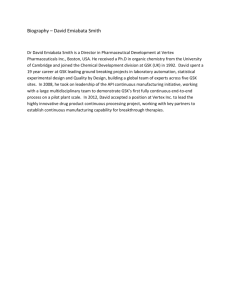
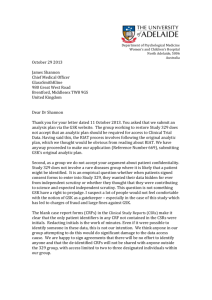
![Structural and electronic properties of GaN [001] nanowires by using](http://s3.studylib.net/store/data/007592263_2-097e6f635887ae5b303613d8f900ab21-300x300.png)

